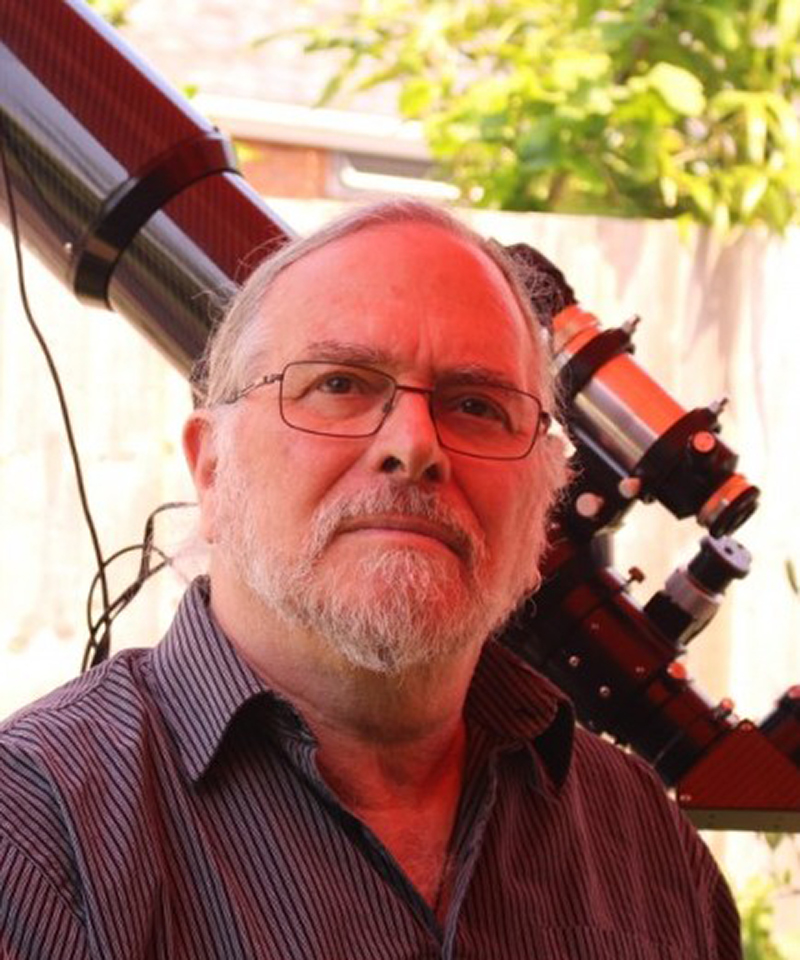For decades now the Helios Stellar range has had a reputation for producing good quality, mid-priced astronomical binoculars. We were looking forward to trying out the latest offering from the Stellar II range, the 16x80s.
The immediate impression is how robust they feel. They are covered in a synthetic, rubber-like armour, which gives a secure grip with or without gloves, even when they’re damp with dew.
The individual eyepiece focusing is smooth but could be slightly stiffer to prevent accidental refocusing, especially when you’re folding down the eye cups.
The knurled ring on each eyepiece makes them easy to focus with gloved fingers.
The central hinge is not only smooth but tight enough that it won’t accidentally slip once you’ve set it where you want it, or when you’re adjusting the focus on a tripod-mounted pair of binoculars.
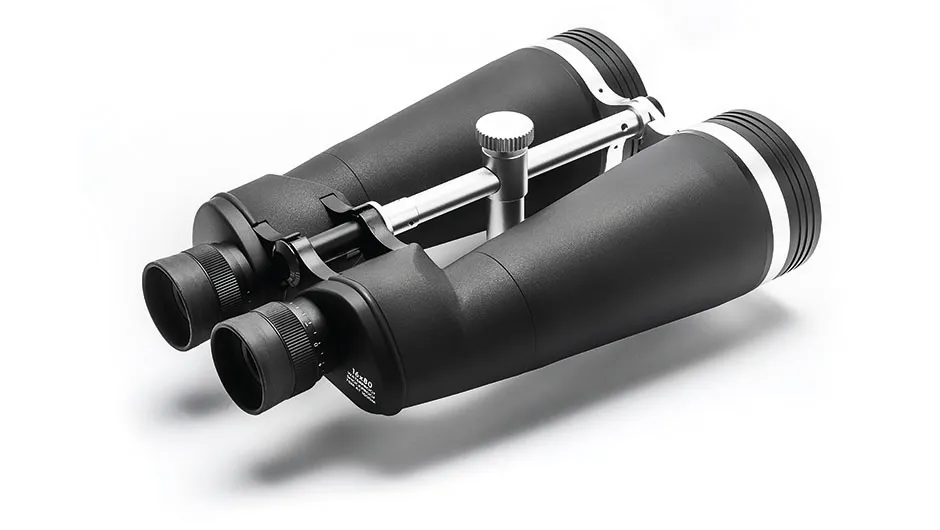
The plug-in objective covers are an excellent fit and won’t come off accidentally so long as you make sure you’ve attached them properly.
The eyepieces have a tetherable double rain guard-type cover that fits securely and doesn’t limit the interpupillary distance when in place.
There is 10mm between the eyepieces at their closest, which should comfortably accommodate most people’s noses, and the pliant, rubber eye-cups make the binoculars comfortable to use.
The objective lenses are recessed 14mm into their barrels, giving good protection against accidental touching, but insufficient for dew protection.
When you look through them, the images from each side immediately merge into one throughout a range of interpupillary distances, indicating that the collimation is spot on.
With fully-corrected vision, the eyepiece dioptres were close to zero when we focused to infinity, suggesting they’ve been set properly.
There is a huge amount of adjustment available either side of this, so the binoculars can easily be used without spectacles by people with acute long- or short-sightedness.
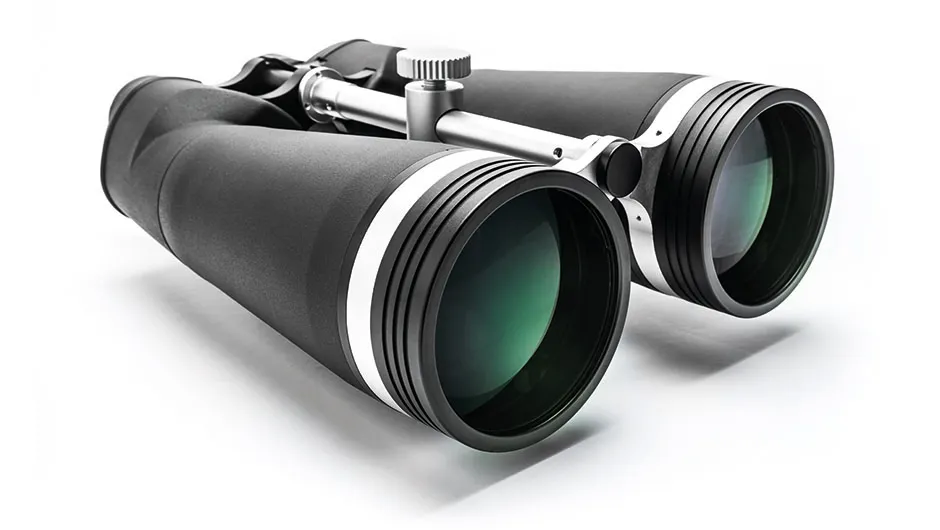
Baffling lack of glare
Despite the absence of any baffles inside the objective tubes control of stray light is good, with only a small amount of glare when the Moon was just outside the edge of the field of view, and none at all with first magnitude stars in the same position.
We tested the Stellar IIs under a variety of sky conditions, mounted on a sturdy photographic tripod with a fluid video head.
Stars consistently came to a good focus over the central 70 per cent of the field of view.
We noticed a small amount of off-axis chromatic aberration on the Moon’s terminator and limb, but the on-axis colour correction is good.
This aids the colour rendition, which is excellent.
The different hues of Alderamin (Alpha (α) Cephei) and Zeta (ζ), Delta (δ) and Mu (μ) Cephei were immediately obvious, and the contrasting gold and sapphire of Albireo (Beta (β) Cygni) was almost vibrant.
We could easily split Albireo into its two components and, despite some field curvature, could see that the star was a double over the central 85 per cent of the field of view.
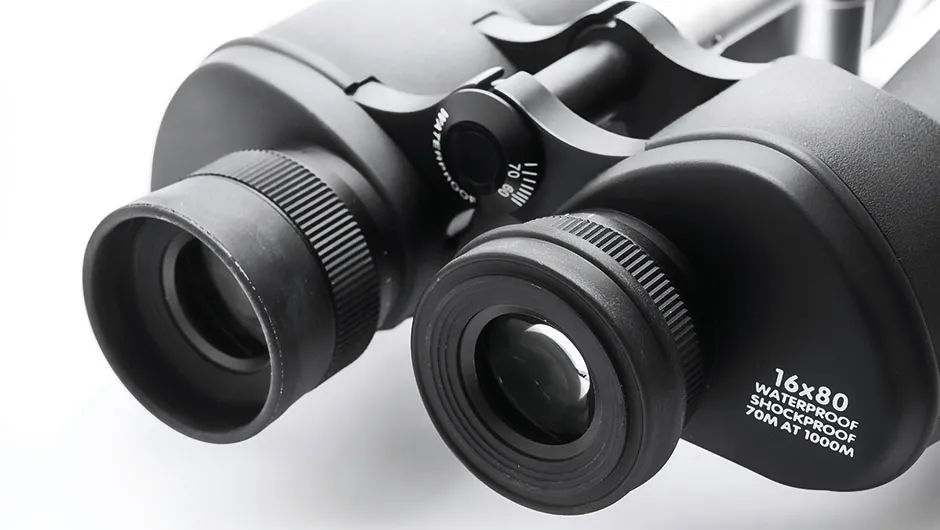
Deep-sky excellence
This was all very impressive, but where these binoculars really excelled was on open clusters and extended deep-sky objects such as galaxies and bright nebulae.
The Pleiades leapt out at us, its collection of hot blue-white stars blazing like diamonds under a spotlight; both the southern Milky Way and the Cassiopeia region were filled with knots of stars and – even under suburban skies – the North America Nebula (NGC 7000) was obvious as a brightening of the sky background.
The contrast is very good and, when the constellation Cygnus and Aquila were at their highest in the late summer sky, their dark nebulae gave a 3D effect to the Milky Way.
The Helios Stellar II 16x80s are a significant step up from typical ‘starter’ binoculars, so if you’ve been bitten by the binocular astronomy bug and want something that will show you considerably more without stretching your finances as much as premium binoculars will do this would be an excellent choice.
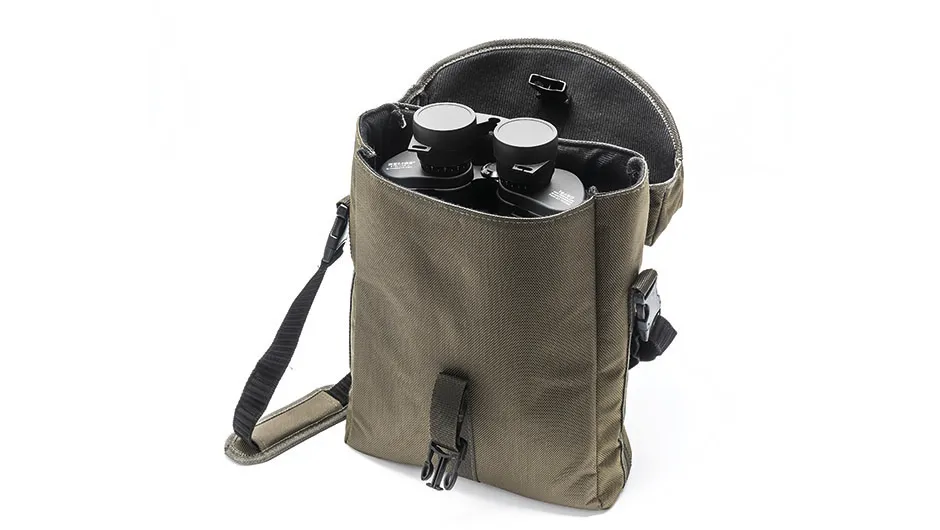
Very bright images
What immediately struck us the first time we tried these binoculars is how bright many of the usual ‘faint fuzzy blobs’ seemed.
Some of this is down to the very good anti-reflective coatings, but it is mostly thanks to the 5mm exit pupil resulting from 16x magnification with 80mm aperture.
5mm is only slightly less than the diameter of a typical adult’s pupils, so it produces a near-maximum image brightness on your retina.
This makes smaller, fainter objects like M51 and M81 very easy to locate.
On a Moonless night under a suburban sky, the nearer edge of the Andromeda Galaxy, M31, had a more abrupt edge because of its dust lane.
The Triangulum Galaxy, M33, showed a mottled effect that hinted at its spiral structure and, despite being at low altitude, the Pinwheel Galaxy, M101, was unusually distinct.
Comet 21/P Giacobini-Zinner, which was in Cassiopeia at the time, was obviously non-stellar and, with averted vision, even showed hints of a tail.
Effective anti-reflective coatings
When we shone a bright light into the objective lens, only a small amount of light reflected from its surface, confirming the effectiveness of the anti-reflective coatings.
Helios specifies a light throughput of 85 per cent, which is what you would expect for binoculars of this quality.
Central mounting bar
The central mounting bar adds rigidity to the objective barrels.
The sliding mounting post, which allows you to achieve optimal balance, is threaded to ¾-inch, with a ¼-inch adaptor provided so that it fits both standard sizes of tripod head screw.
Waterproof and nitrogen-filled
Rather than just specifying these binoculars as ‘waterproof’ Helios has rated them as IPX7, which means they will keep water out when totally immersed to a depth of 1m or for 30 minutes.
Meanwhile, the nitrogen filling will prevent any internal corrosion by oxidation.
Good eye relief
If you need to observe while wearing spectacles, the rubber eye cups fold down easily.
The eye lenses are recessed slightly for protection, but there is enough of the specified 20mm eye relief available to enable the entire field of view to be visible with spectacles.
Good quality carry-case
The military-style, woven nylon case feels satisfyingly robust and has enough padding to offer good protection to your investment.
It seals with a side-release buckle, and the same device is used to attach the webbing shoulder strap.
It has very substantial belt loops.
Vital stats
Price£279.00
Aperture80mm
Weight2.4kg
SupplierOptical Vision Ltd
Websitewww.opticalvision.co.uk
This review originally appeared in the November 2018 issue of BBC Sky at Night Magazine
